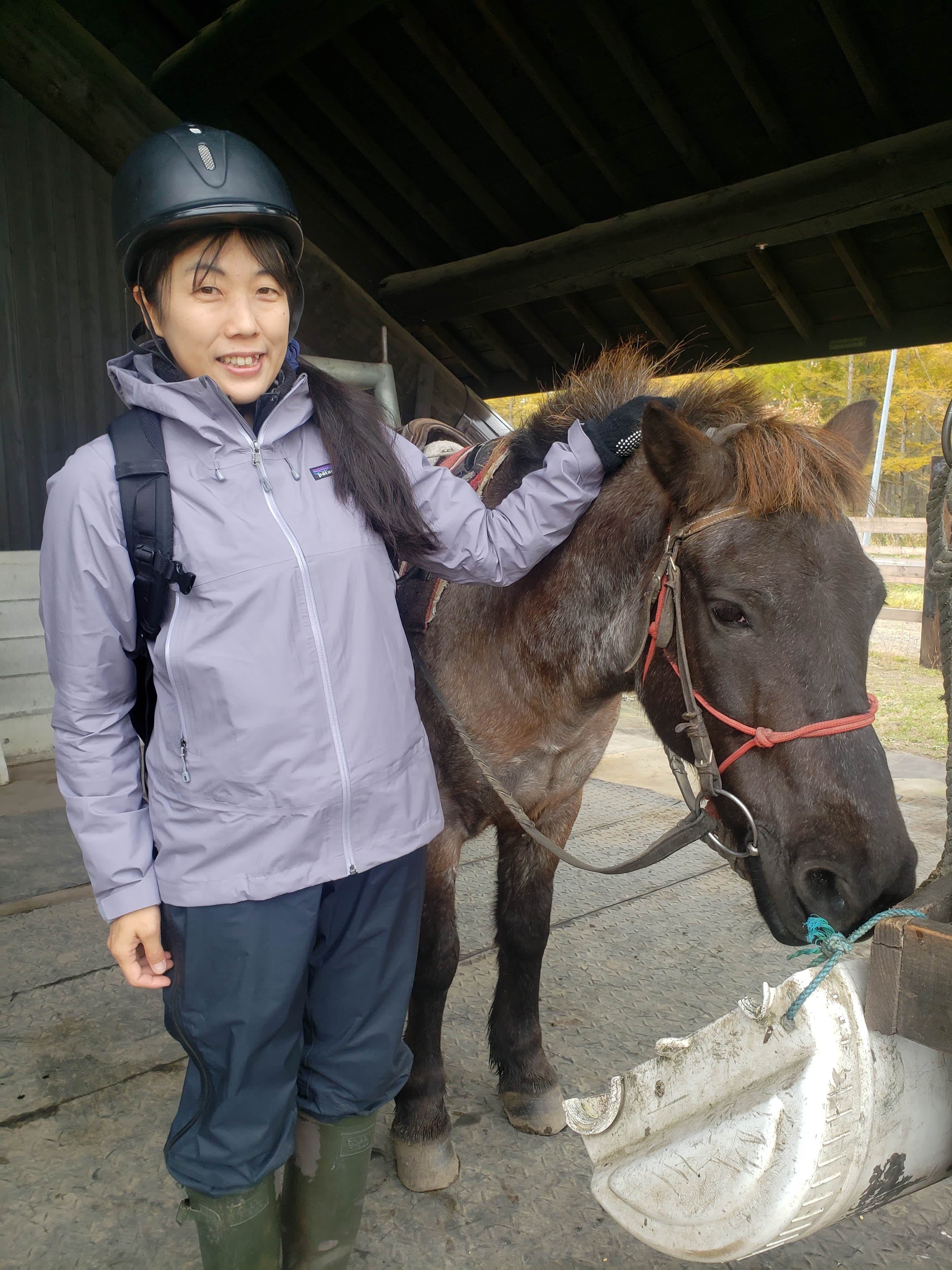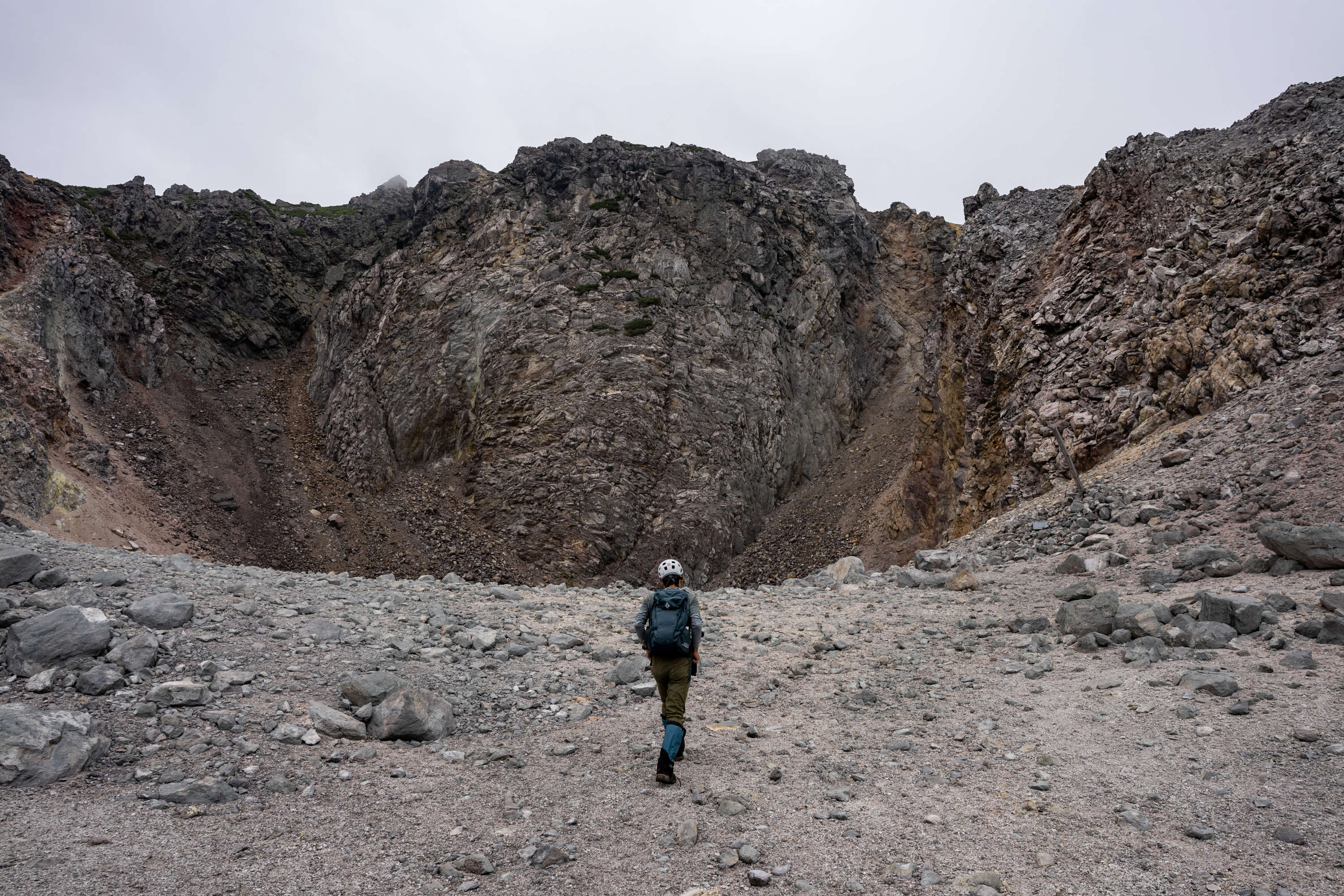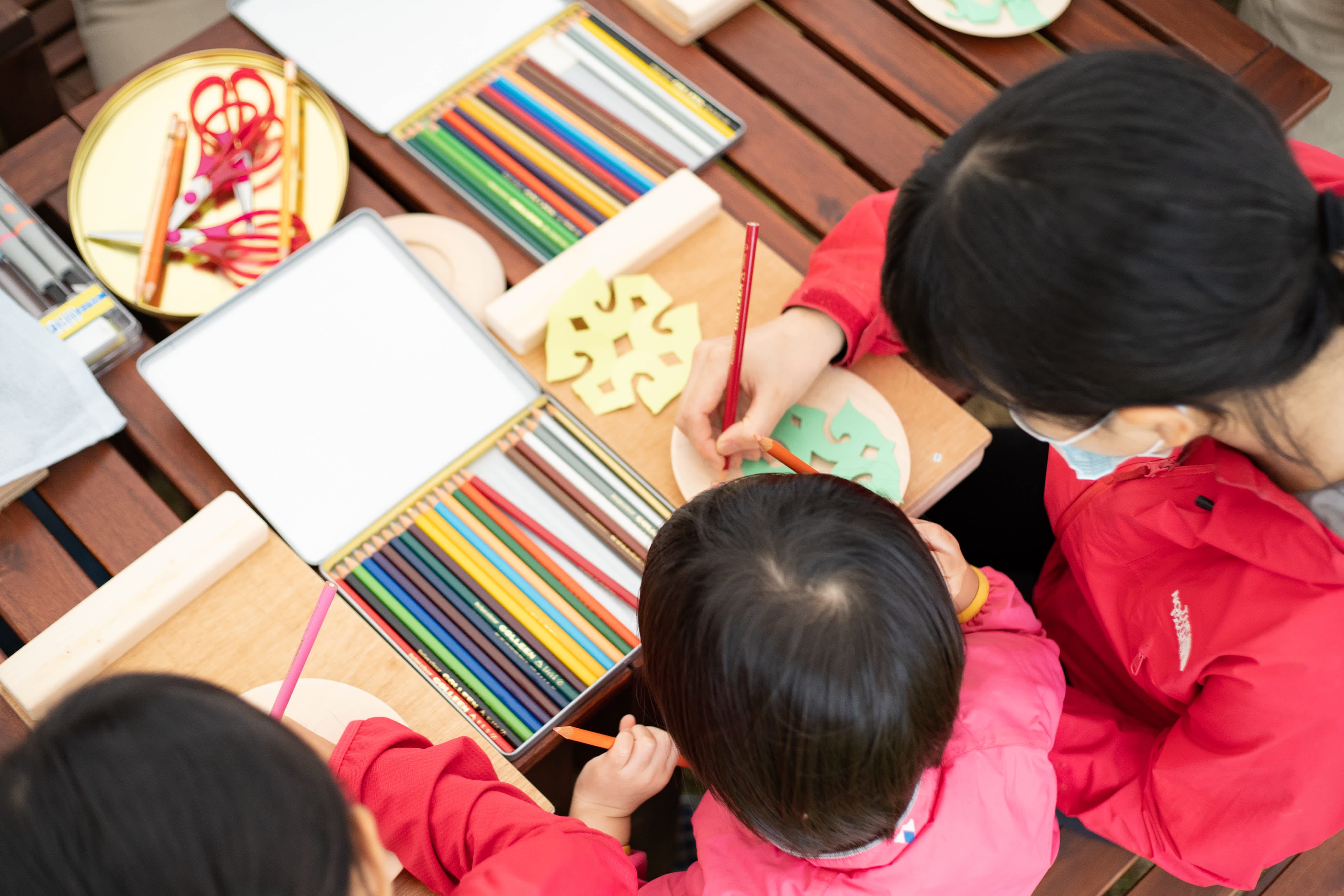 Sanae Kinase, the Sustainability Co-ordinator of Teshikaga Town
Sanae Kinase, the Sustainability Co-ordinator of Teshikaga Town
With over 20 years of experience in guiding canoeing tours in Eastern Hokkaido, Sanae Kinase works as a Sustainability Co-ordinator, helping to drive initiatives to protect the rich nature and culture of Teshikaga and its surrounding areas. We talk to Sanae about her own personal experience in this vast and relatively unexplored region of Japan and how her small town has become one of the leading examples of a sustainable tourist destination.
 Sanae sitting under a beautiful Japanese plum 'ume' tree in bloom
Sanae sitting under a beautiful Japanese plum 'ume' tree in bloom
1) Tell us a bit about yourself? How did you come to be in Teshikaga?
I moved to Teshikaga from Kanagawa in 1996. My husband started a company that offers eco tours using canoes on the Kushiro River. Following that, I managed the canoe guide company for 20 years. In 2016, I became a freelance guide. I am now a Sustainability Coordinator for Teshikaga. 65% of the town is in the nature-rich Akan-Mashu National Park. It makes it an incredible base for outdoor adventures.
 Sanae, canoeing along Kushiro River
Sanae, canoeing along Kushiro River
Teshikaga is a town that places great importance on its efforts to protect the area's rich nature and the lives of the people that live there, so that they may be passed on to future generations. My role involves sustainable community development – we want everyone who lives in Teshikaga to be a part of how it develops as a sustainable tourism destination. I coordinate with experience providers, and for our new website, I worked with the graphic designer and copywriter.
 Canoeing down Kushiro River in summer
Canoeing down Kushiro River in summer
2) What is there to do in this eastern region of Hokkaido?
As Teshikaga belongs to a national park, you can enjoy various activities. Among them, the canoe tour on the Kushiro River is a unique experience. The headwaters of the Kushiro River, which flows out from Lake Kussharo, are exceptionally quiet and beautiful, with clear water flowing through forests that retain their primeval appearance.
 Trekking in a somma (the rim of a volcanic crater or caldera) of Lake Mashu
Trekking in a somma (the rim of a volcanic crater or caldera) of Lake Mashu
In 2020, the Mashu-Kussharo Trail connecting Lake Mashu and Lake Kussharo opened It’s a great trail for hikers who enjoy thru-hikes. It is also possible to walk the trail with a guide.
I also recommend the Atosanupuri Trekking Tour for an up-close experience with the largest caldera in Japan. This is a special tour that allows you to climb the volcano (known as Mt. Iou / Atosanupuri in Ainu language) with a certified guide who has special permission to enter. You can also learn about the history of sulphur mining that once took place on the mountain.
 Go on a hiking tour of active volcano, Mt. Io. © Teshikaga town
Go on a hiking tour of active volcano, Mt. Io. © Teshikaga town
There is much for you to choose from - enjoy horseback riding, mountain climbing, canoeing on Lake Kussharo, cycling, and stand-up paddle boarding. Learn about Ainu culture through a craft experience with local Ainu people.
3) For those who want some relaxation time in their Japan holiday, what does Teshikaga offer?
As I mentioned earlier, this is the land of Japan's largest caldera. As a result, there are hot springs everywhere in the town, and you can enjoy hot springs with various health benefits. In particular, Kawayu Onsen, which has long been known as a therapeutic spring, is characterized by its strong acidity. Soak yourself in the hot springs and relax after all your outdoor adventures!
 Kussharo Sauna Club in winter © Co Eastside Ltd
Kussharo Sauna Club in winter © Co Eastside Ltd
In recent years, a number of sauna facilities have opened in the area. There are many lodging facilities with saunas, but there are also facilities that specialize in them, such as the Lake Kussharo Sauna Club. You can even enjoy a tent sauna while camping on the lakeside – a wonderful way to slow down and unwind!
 A closer look at the Kussharo Sauna Club hut © Co Eastside Ltd
A closer look at the Kussharo Sauna Club hut © Co Eastside Ltd4) What are the must try local dishes for Japanese food lovers? Where do you like to go to eat?
For Teshikaga it has to be Mashu soba. It is cool here even in summer, and delicious soba can be harvested. Mashu soba noodles are hand-made from buckwheat that is harvested in local fields, carefully dried, and ground with a stone mill. Each soba restaurant does it in their own way. The noodles are characterized by their strong aroma. The noodles are produced in small quantities, so you really need to come to Teshikaga to try them.
 Local specialty Mashu soba noodles made with Teshikaga-grown buckwheat © Teshikaga town
Local specialty Mashu soba noodles made with Teshikaga-grown buckwheat © Teshikaga town
Another local dish that you should try is imo dango potato dumplings, a soul food that has been loved by locals for a long time. Teshikaga is a potato production area, and sweet potatoes grow well due to the large temperature difference between summer and winter. Potato dumplings are made by mashing boiled potatoes and kneading them with potato starch. They have a chewy texture and are deliciously seasoned with soy sauce. Mashuko Kamui Terrace and the Mt. Iou Rest House are good places to try handmade potato dumplings.
 Ainu Cultural Experience creating stencils of traditional Ainu patterns with the family © Tomoki Kokubun
Ainu Cultural Experience creating stencils of traditional Ainu patterns with the family © Tomoki Kokubun 5) How can visitors meet local people? What are some experiences focused on interacting with local people.
For each experience Teshikaga offers you can arrange a local resident who has expertise in it to act as an interpreter/guide. They can take you on a deeper journey into the nature and culture of the area – be it forest walking, canoeing, horse riding, cycling, etc. – as well as arrange all the equipment you will need.

Teshikaga offers opportunities to learn about Ainu culture directly from the Ainu community. Participate in a craft workshop where you’ll hear stories about the patterns that Ainu have used in their daily lives for generations. Carve the patterns on wooden plates and cutting boards, and embroider them on cloth.
In the Kotan district, where many Ainu live, there is the Kussharo Kotan Ainu Museum. To understand the lifestyle, culture, and history of the Ainu people, please visit this place as well.
 Ainu Cultural Experience, carving traditional Ainu patternwork into wood © Tomoki Kokubun
Ainu Cultural Experience, carving traditional Ainu patternwork into wood © Tomoki Kokubun6) Where do you recommend people stay in Teshikaga?
Here are some places you might like to stay in Teshikaga:
• Kawayu Onsen Oyado Kinkiyu Bettei - Suikaura - Relax in the hot water of Kawayu Onsen and enjoy meals made with plenty of local ingredients.
• Kussharo Prince Hotel - a resort hotel on the shores of Lake Kussharo. All rooms have a lake view.
 The lavish interior of TAPKOP villa © Co Eastside Ltd
The lavish interior of TAPKOP villa © Co Eastside Ltd
• TAPKOP - a villa on a vast site in Akan-Mashu National Park that can be reserved exclusively for one group of two people per day. Exquisite meals are prepared just for the two guests by a private chef.
There are around 50 lodging facilities in Teshikaga town, so there is something for everyone. Choose from inns that boast delicious cuisine, luxury lodging facilities, camping grounds, small places offering homely hospitality, unique lodges where you can experience Ainu culture, inns with spectacular views, and ryokans with onsen hot springs. Feel free to contact us to find out more.
 The outside TAPKOP, surrounded by the lush forests of Eastern Hokkaido © Co Eastside Ltd
The outside TAPKOP, surrounded by the lush forests of Eastern Hokkaido © Co Eastside Ltd
Thank you for talking with us!
Start planning a trip to Teshikaga now at visit-teshikaga.com!
Follow us on Facebook, Instagram or Twitter for more Japan-related news and updates!


























































